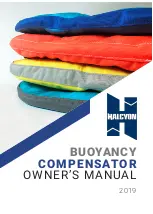INFICON
Introduction | 4
074-594-P1H Micro GC Fusion Operating Manual
23 / 319
4.5.2 Separation
Component separation of a sample injected onto a column is achieved through the
interaction between the sample and the column coating, also known as the stationary
phase. The less retentive the column coating is to a specific compound, the faster that
compound travels, or elutes, through the column. Order of elution is primarily
determined by the compound boiling point and polarity.
Micro GC Fusion uses high performance fused silica capillary columns to perform GC
separation. Two types of capillary columns are used:
• Porous Layer Open Tubular (PLOT)
PLOT columns have small particles coated on the inner surface of the column and
separation is based on gas-solid partitioning. Common PLOT columns are
Molsieve, Q-Bond, U-Bond, and Alumina. PLOT columns separate based on com-
pound polarity.
• Wall Coated Open Tubular (WCOT)
WCOT columns have a liquid stationary phase based on gas-liquid partitioning.
The dimethylpolysiloxane (PDMS) column is a commonly used WCOT column,
which primarily separates compounds based on boiling point.
Fused Silica Capillary Columns
Wall Coated Open Tubular
(WCOT)
Porous Layer Open Tubular
(PLOT)


















